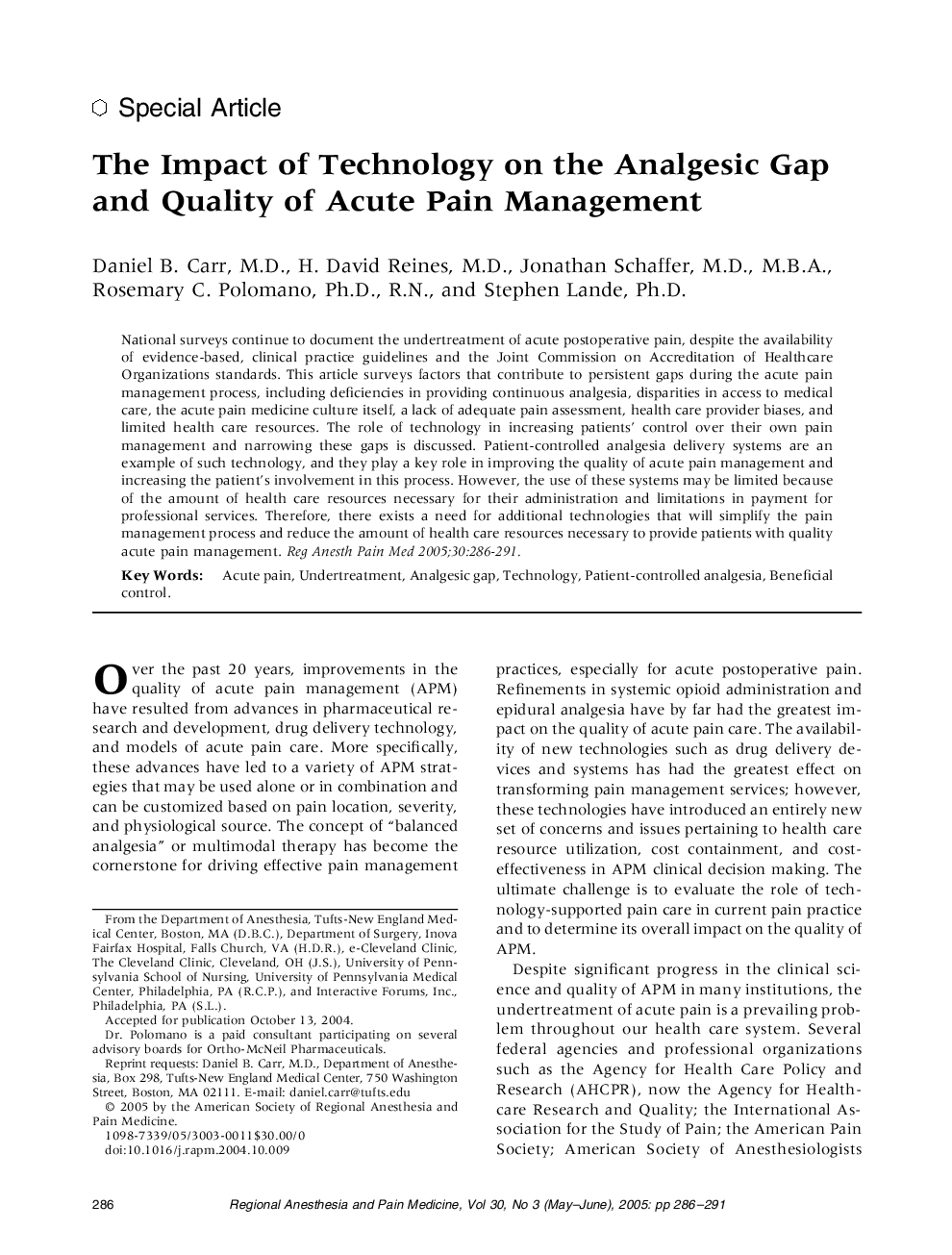| Article ID | Journal | Published Year | Pages | File Type |
|---|---|---|---|---|
| 9098614 | Regional Anesthesia and Pain Medicine | 2005 | 6 Pages |
Abstract
National surveys continue to document the undertreatment of acute postoperative pain, despite the availability of evidence-based, clinical practice guidelines and the Joint Commission on Accreditation of Healthcare Organizations standards. This article surveys factors that contribute to persistent gaps during the acute pain management process, including deficiencies in providing continuous analgesia, disparities in access to medical care, the acute pain medicine culture itself, a lack of adequate pain assessment, health care provider biases, and limited health care resources. The role of technology in increasing patients' control over their own pain management and narrowing these gaps is discussed. Patient-controlled analgesia delivery systems are an example of such technology, and they play a key role in improving the quality of acute pain management and increasing the patient's involvement in this process. However, the use of these systems may be limited because of the amount of health care resources necessary for their administration and limitations in payment for professional services. Therefore, there exists a need for additional technologies that will simplify the pain management process and reduce the amount of health care resources necessary to provide patients with quality acute pain management.
Related Topics
Health Sciences
Medicine and Dentistry
Anesthesiology and Pain Medicine
Authors
Daniel B. M.D., H. David M.D., Jonathan M.D., M.B.A., Rosemary C. Ph.D., R.N., Stephen Ph.D.,
